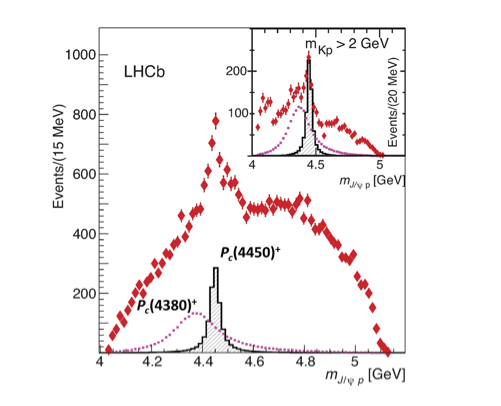The mass of J/ψ–proton (J/ψ p) combinations from Λb → J/ψpK-decays. The data are shown as red diamonds. The predicted contributions from the Pc(4380)+ and Pc(4450)+ states are indicated in the purple and black distributions, respectively. Inset: the mass of J/ψ p combinations for a restricted range of the K-p mass, where the contribution of the wider Pc(4380)+ state is more pronounced. (The other contributions from conventional hadrons, which are responsible for the remaining features in the data distributions, are not displayed.) © CERN / LHCb Collaboration
CERN Image 1
Published 15, July 2015 at 501 × 406 in The LHCb experiment at CERN’s Large Hadron Collider reports the discovery of a class of particles known as pentaquarks
Bookmark the permalink.

